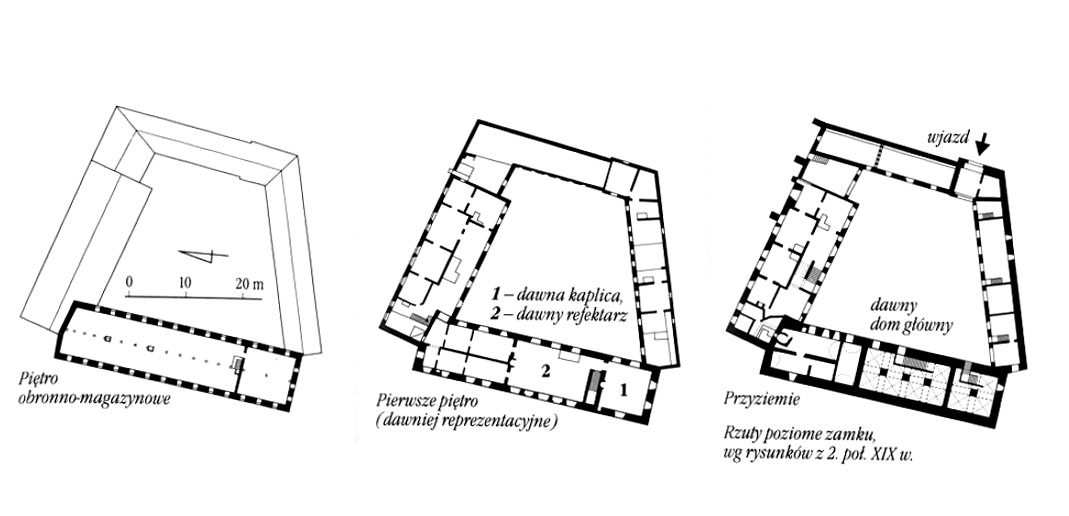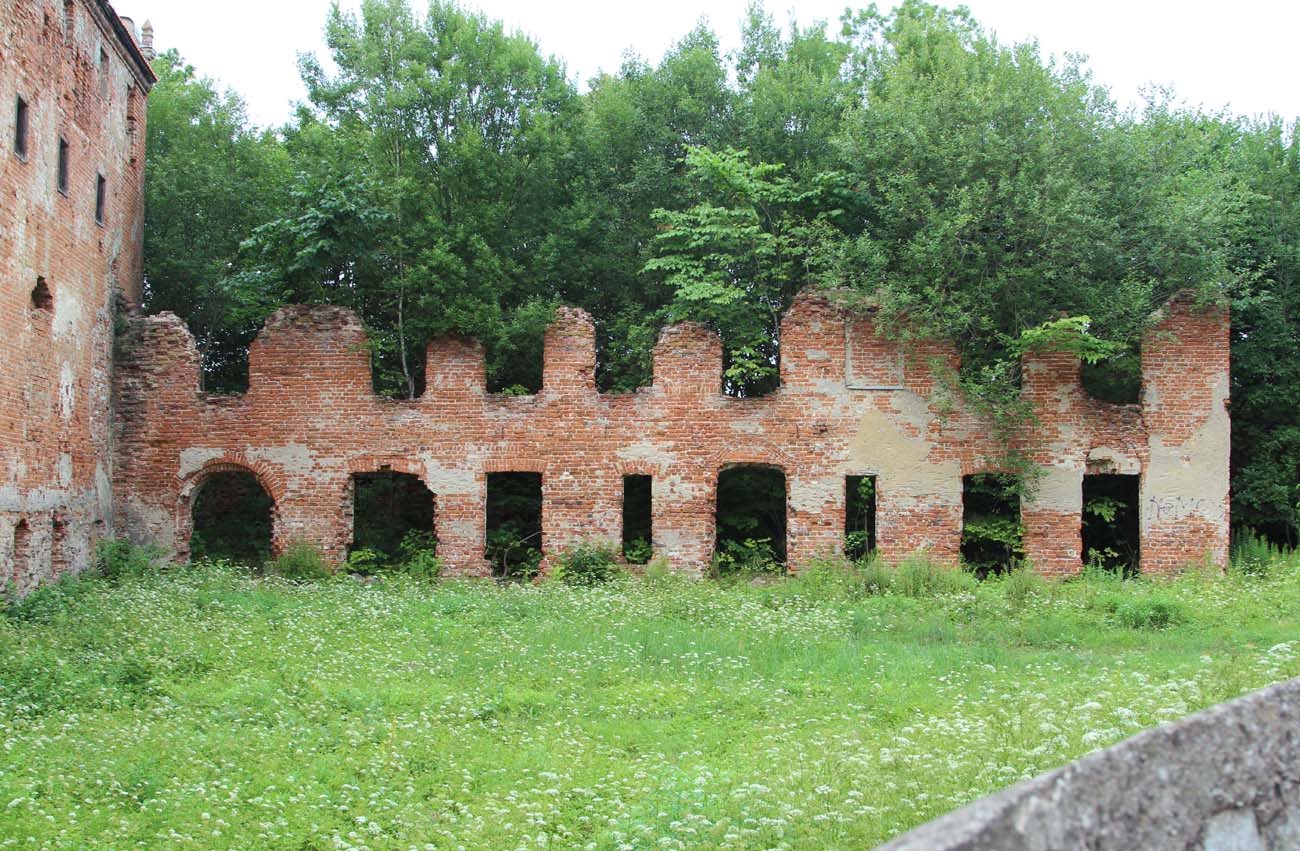History
Originally, the place of the castle was the Prussian hillfort Melcekuke, which was the local center of power and worship of the Warmian tribe. Apparently, the origin of its Prussian name can be explained as a “grove of underground powers.” It was conquered by the Teutonic Knights and donated by them in 1251 to the bishop of Warmia. At that time, its name, which was transferred to the town and the castle, became Germanized to Mehlsack, and then Malzak. After 1288, the bishop gave the surrounding areas to the Warmian Chapter, which established the settlement as the capital of one of the three bailiffs over which it performed feudal authority.
The castle was built by the Warmian chapter in the first half of the 14th century as a seat for chapters officials: a bailiff, and then also an administrator and a subordinate land vogt. They supervised the colonization action of the surrounding areas, and the vogt (witnessed in Pieniężno since 1312) was responsible for military affairs and judged in the most severe criminal trials. In the mid-fourteenth century, the administrator’s office moved to Olsztyn, and the burgrave managed the castle. From October 1518 to March 1519, the astronomer Nicholas Copernicus lived in the castle, who inspected the surrounding villages belonging to the Warmian chapter.
Wars, fires, destruction and plagues did not spare Pieniężno. Almost the entire town with the castle and the church was burnt by Polish-Lithuanian army in 1414. During the Thirteen Years’ War, as the only town in Warmia, Pieniężno opted for the Teutonic Order, for which in 1455 it was destroyed by the Prussian Confederation. During the last war of the Teutonic Knights with Poland in 1520, the castle was conquered by the Order. In the years 1589-1599, the administrator of the rebuilt stronghold was the Prince of Transylvania Andrzej Batory, nephew of Polish king Stefan Batory. However, another serious destruction brought Swedish wars in the seventeenth century, during which the castle was burned and partly demolished. After these events, the stronghold was rebuilt in the baroque style. In 1772, the castle was taken over by the king of Prussia and ceased to be the property of the Warmian Chapter. Around 1870, the eastern and southern wings were demolished. The remaining ranges were reconstructed for the needs of the Prussian administration and court. In 1945, the castle was partially destroyed.
Architecture
The castle was erected on the defensive site, from the north and west surrounded by the Wałsza River flowing in a deep ravine. The stronghold stood on the edge of the promontory, falling down into the river valley. It was built on a square plan similar to a trapezoid. Originally, it was connected with the fortifications of the town, which stretched on the south-eastern side. The castle itself was not particularly fortified, it did not have a tower.
The oldest and most important part of the castle was the western range from the early fourteenth century, additionally superstructured in the middle of this century. The main building was 45 x 11 meters, three storeys (in the northern part four) and there was a cellar. It was built of brick on a stone plinth. It was covered with a gable roof and decorated with gothic gables at shorter walls. The first floor served as representative, in the southern and middle parts it housed a chapel and refectory, and in the northern part, which was divided into two levels, official and residential rooms. The top floor served storage and defense functions, while on cellars and ground floor were warehouses and utility rooms. In the grond floor, two rooms under the refectory and the chapel are crowned with a groin vault supported by pillars. Probably cellar was similarly vaulted. The not preserved vaults of the refectory and the chapel, most likely were richly decorated, perhaps with stellar vaults.
The two-storey northern wing, adjacent to the main castle house, also had a medieval origin. It housed burgrave apartments and clerical chambers. Similar was the southern wing, housing stables in the basement, and higher rooms for servants and utility rooms. From the east there were stables and a gatehouse leading to the castle and church.
Current state
To this day, the rebuilt west range of the castle has been preserved, unfortunately its interior has been devastated, and the medieval windows have been replaced by rectangular openings. Since 2000, the castle was owned by a private person, fortunately, the District Court in Braniewo issued a verdict ordering the return of the castle to the municipality, due to the lack of renovation works and threats to the monument.
bibliography:
Garniec M., Garniec-Jackiewicz M., Zamki państwa krzyżackiego w dawnych Prusach, Olsztyn 2006.
Leksykon zamków w Polsce, red. L.Kajzer, Warszawa 2003.




